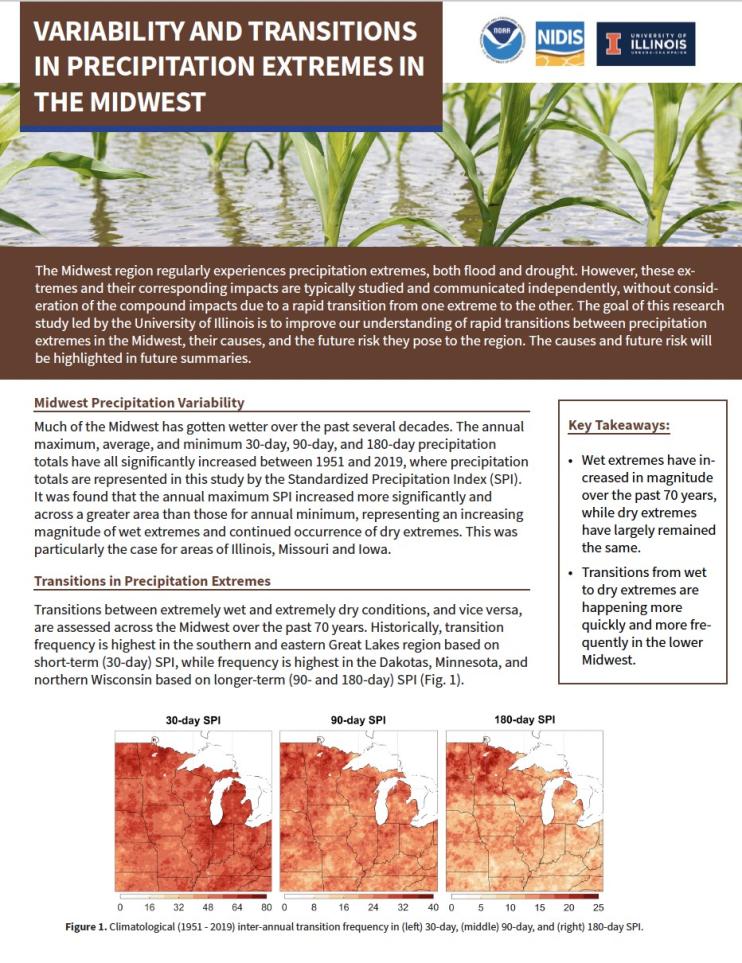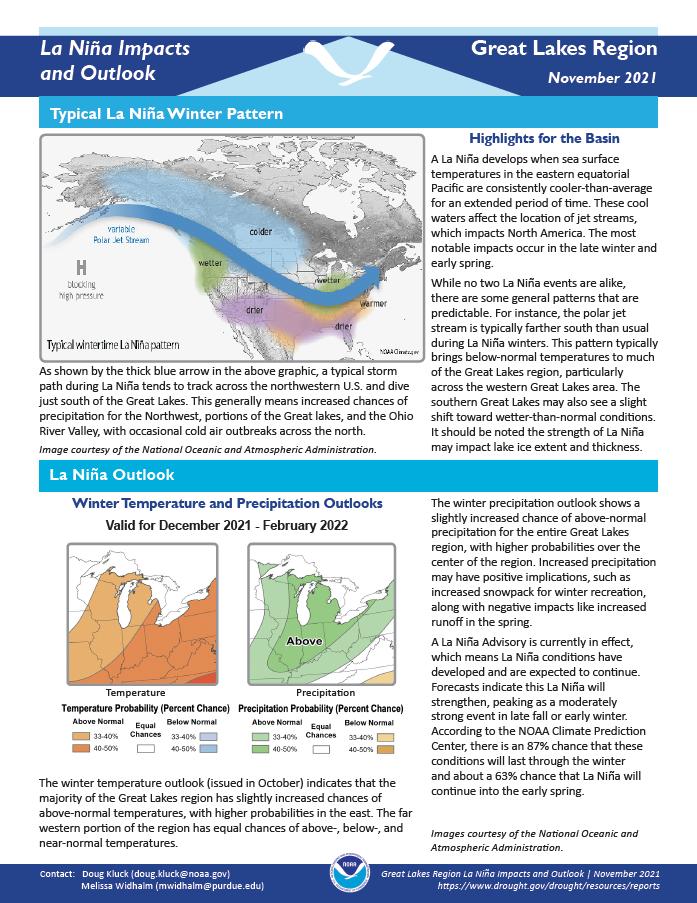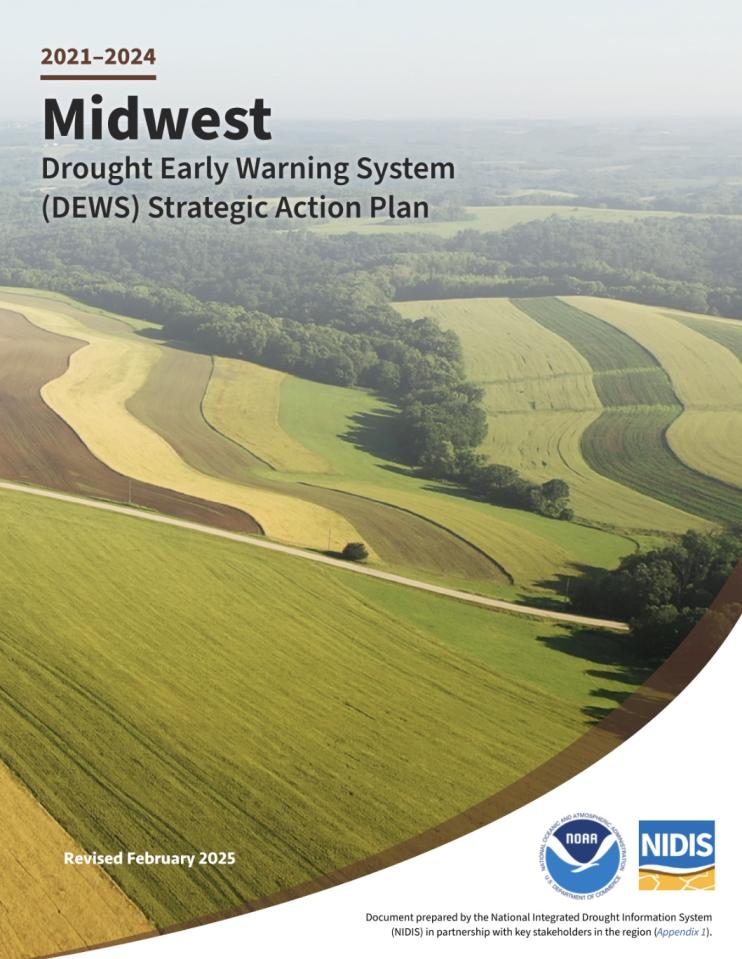For the latest forecasts and critical weather information, visit weather.gov.
Quarterly Climate Impacts and Outlook for the Midwest Region for September - November 2021. Dated December 2021.
Above-normal temperatures prevailed across the Midwest during the fall. Average temperatures were 2.6°F above-normal, ranking the 6th warmest dating back to 1895. Although fall precipitation averaged near-normal for the Midwest as a whole, it was highly variable by region and by month.
Since 2011, the National Oceanic Atmospheric Administration’s Central Regional Climate Services Director, American Association of State Climatologists, U.S. Department of Agriculture Climate Hubs and Office of the Chief Economist, National Drought Mitigation Center (NDMC), and National Integrated Drought Information System have partnered to provide monthly climate and drought updates to stakeholders who live, work, or have interests in the North Central U.S.
The National Weather Service Central Region developed 2021–2022 Winter Hazard Outlooks in coordination with NOAA's National Centers for Environmental Information and National Integrated Drought Information System (NIDIS); U.S. Department of Agriculture; High Plains Regional Climate Center; and National Interagency Fire Center's Geographic Area Coordination Centers. This outlook highlights the various Winter hazards that could occur and potential impacts across the North Central U.S.
The Midwest region regularly experiences precipitation extremes, both flood and drought. However, these extremes and their corresponding impacts are typically studied and communicated independently, without consideration of the compound impacts due to a rapid transition from one extreme to the other.
This handout provides information on the typical La Niña winter pattern; the La Niña outlook; potential winter and spring impacts; and comparisons of conditions during previous La Niña years for the Great Lakes region. Updated November 2021.
NOAA’s Regional Climate Services Program created these Outlooks to inform the public about climate impacts within their respective regions. Each regional report contains easy-to-understand language, and anyone can access them through the Drought Portal.
This handout provides information on the typical La Niña winter pattern; the La Niña outlook; potential impacts; and comparisons of conditions during previous La Niña years for the Midwest U.S. Updated November 2021.
NOAA’s Regional Climate Services Program created these outlooks to inform the public about climate impacts within their respective regions. Each regional report contains easy-to-understand language, and anyone can access them through the Drought Portal.
The purpose of the 2021–2024 Midwest Drought Early Warning System (DEWS) Strategic Action Plan is to identify priorities, outcomes, and activities the Midwest DEWS plans to undertake together to improve drought early warning and preparedness for the region.
Quarterly Climate Impacts and Outlook for the Great Lakes Region for June - August 2021. Dated September 2021.
Temperatures across the basin were as much as 2°C (4°F) above normal for the summer. For summer and each month of the season, all lake basins except Superior saw near- or above-average precipitation.
Quarterly Climate Impacts and Outlook for the Midwest Region for June - August 2021. Dated September 2021.
The Summer of 2021 was warm across most of the Midwest, with temperatures 1-5°F above normal. The unseasonably warm temperatures were felt most towards the north. Precipitation was quite variable across the Midwest this summer, with generally wetter conditions to the east and drier conditions in the northwest portions of the region. In central and eastern areas of the Midwest, several heavy rain events led to above-normal precipitation accumulation.











